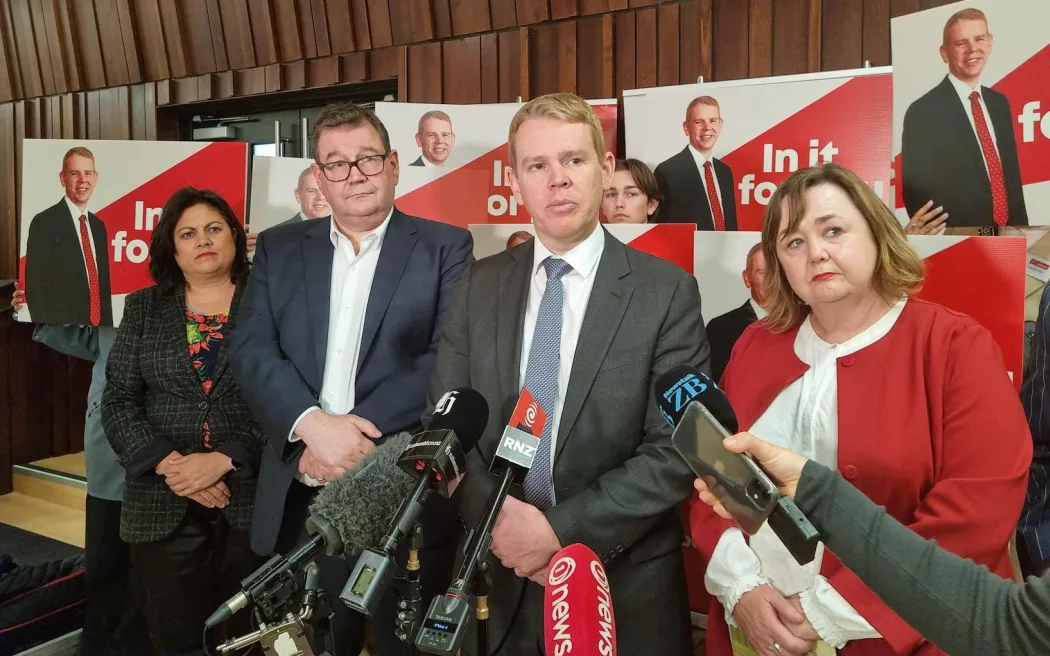
By rnz.co.nz and is republished with permission
Labour says it will build 6000 additional public and transitional houses on top of its existing commitments, if re-elected.
It would take the total built since Labour came into office to 27,000 houses by 2027.
Housing spokesperson Megan Woods said it would be a significant step to eliminate the public housing waitlist.
According to Woods, National had not committed to further public housing beyond 2025 – meaning it would have to spend more than it had currently budgeted if it wanted to match the policy.
“Labour is the only major party with a deliverable plan that will help ensure every New Zealander has access to a warm, dry and affordable home,” she said.
“In just six years we’ve delivered over 13,000 public homes, the most of any government since the 1950s. We’ve also added over 4,000 transitional homes. We are on track to deliver 21,000 public and transitional homes by 2025 and there is more to come. If re-elected, we’ll deliver another 6000 public homes by 2027.
“Labour wants to eliminate the public housing wait list. Delivering over 27,000 new public and transitional homes by 2027 is a significant step forward to achieving exactly that.
“Our government [proud to have] delivered one in six public homes within New Zealand’s entire public housing stock – and we’ll keep going, building significantly more supply into our housing market.
“This is a stark contrast to National, which left government with 1500 fewer public homes than it started with, sucked out hundreds of millions in dividends and has reluctantly said it would complete the number of homes we’ve already funded. If National built public homes at the rate we are, there would practically be no public housing waiting list.
“National want to turn off the public housing tap yet again, with no further commitment for public housing beyond 2025. It’s yet another example of how National cuts investment in public assets like housing, hospitals and schools.
“We will keep investing in this critical safety net, so more New Zealanders who need these warm, dry homes can get them.
“We will also expand the commitment we have already made for 15 percent of newly built public homes to be accessible with universal design, to 25 percent of all new public homes,” Woods said.
National criticises Kāinga Ora ‘failed model’
National Party housing spokesperson Chris Bishop said what was needed was a review of Kāinga Ora’s approach, and National was committed to starting one within its first 100 days if elected.
He said the party would also make Kāinga Ora’s funding contestable.
“We’re committing to what the government announced in 2023, which is the current housing spending track … we’re not committing to the spending track that the Labour Party announced today,” he said.
“So 6000 state houses at $6b, that is a million dollars per state house at a time when the government books are deep in the red,” Bishop said.
“It’s a failed model because all they do in housing is just shovel money into Kāinga Ora which their own officials say is essentially a financial basket case. The leaked documents around a year or so ago indicate that Kāinga Ora will be riddled with debt as late as 2050, it can’t pay its way, they’ve hired 1700 more staff in the last five years alone, spent $24m on back-office renovations.
“Things are so bad at Kāinga Ora they’ve got three Bloomberg terminals even though they don’t need them. What is required there is an independent review and scrutiny of what is a failing organisation.”
“We do want to see more social housing in New Zealand that’s an important part of addressing New Zealand’s housing crisis … but our view is they could be much more efficient and nimble at actually building state and social houses.”
Part of the changes would including making funding contestable, he said.
“We are going to make the capital that the Crown spends on social housing contestable between Kāinga Ora and the community housing sector … we’re also going to make the operational funding which allows the community housing sector to go to financial institutions and borrow, we’re going to make that contestable as well.”
He promised National would continue increasing social housing stock beyond 2025, but the exact mix of funding was up for debate.
Green Party calls for more action
The Green Party said Labour’s public housing plan was a welcome step forward but called it unambitious.
Co-leader Marama Davidson said her party would build 35,000 public houses over the next five years.
“The time is now to scale up building new homes – not let it plateau at a level that falls short of the current build programme. If people want a government that will build thousands more affordable houses in the places people want to live, then only the Green Party will deliver it,” she said in a statement.
Davidson said Labour’s plan would slow the pace of house building instead of continuing to scale up.
“There are currently 4,500 public and transitional homes under construction. The Green Party has a plan to scale this up to 8000 per year by the end of 2026. Under Labour’s plan, the current programme will be tapering off instead of increasing.
“Aotearoa needs a government that will build thousands of high-quality homes where people can live, rest and thrive.”
Bishop said the Greens policy was “in la la land”.
“It is not possible to build 35,000 new public homes in the next five years, the Green Party plan is a fantasy. It’s also a fantasy because the single biggest thing that would contribute to homelessness in New Zealand is part of their plan – which is rent controls.”


